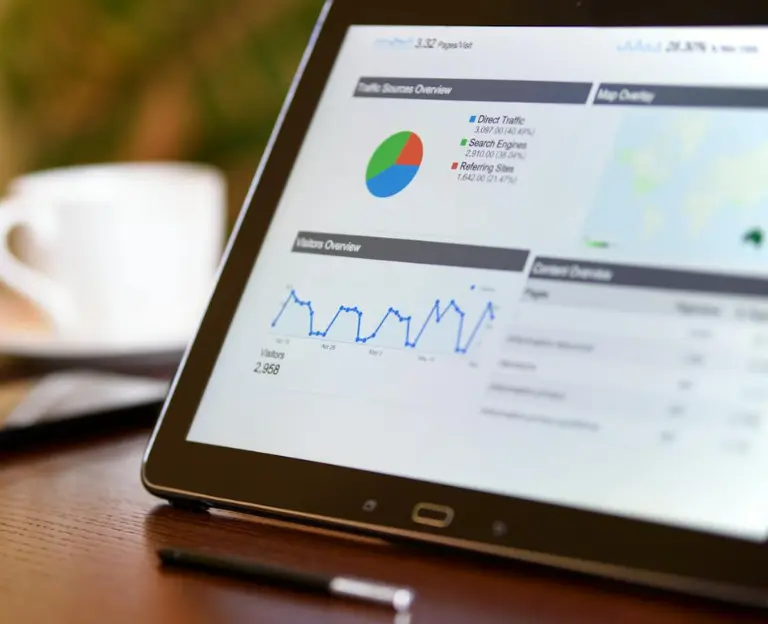Welcome back, AdsWirt community! Today, let’s unravel the fascinating world of digital analytics and explore the intricate art of analyzing user visits on a website. In an era where data reigns supreme, understanding how users interact with your online presence is a game-changer.
1. Why Digital Analytics Matters:
In the realm of digital advertising, knowledge is power. We kick off our journey by delving into the importance of digital analytics. Discover how harnessing the right data can unveil valuable insights, enhance user experience, and drive strategic decisions.
2. Key Metrics to Monitor User Visits:
Embark on a guided tour through the essential metrics that paint a comprehensive picture of user behavior.
- Visits/Sessions: At the heart of user engagement lies the concept of sessions. A session represents a period during which a user interacts with your website. But how is a session defined?
Deep Dive: Understanding Sessions A session begins when a user enters your site and ends when there’s no activity for a specific duration (usually 30 minutes) or at midnight. It’s a container for user actions, encompassing pageviews, interactions, and other engagement metrics. This distinction helps us measure not just visits but meaningful interactions within a specified timeframe.
- Visitors/Users: Now, let’s explore the intricacies of tracking visitors and users. Traditionally, a new visitor is someone landing on your site for the first time. However, we go beyond the basics.
Deep Dive: Managing Multiple Visits Over Time Consider this scenario: If a user visits your site twice within a three-day period, both user visits are recognized as distinct sessions. Why? Because each visit represents a unique engagement, providing a more accurate reflection of user interaction.
- Active Users: Identify the number of users actively engaging with your content, offering a dynamic perspective on your audience.
3. Visitor Insights– Returning Visitors
Dive into the specifics of your website visitors.
- New vs. Returning Visitors: The differentiation between new and returning visitors plays a crucial role in understanding audience dynamics.
Deep Dive: Tracking Through Cookies A “new visitor” is someone who visits your site for the first time within a specified time frame. The tracking is facilitated through cookies, which are snippets of data stored in a user’s browser. If a user deletes their cookies or returns to your site with a different browser, they are considered a new visitor.
- Geolocation: Uncover the geographical locations of your audience, allowing you to tailor content to specific regions.
Deep Dive: The Power and Limitations of Geolocation Understanding the geographical locations of your users is a powerful tool for targeted marketing. It enables you to craft location-specific strategies, catering to the unique needs and interests of different regions. However, it’s crucial to be aware of the limitations.
Geolocation is often determined by analyzing users’ IP addresses. Tools in analytics compare these addresses with data from international IP assignment databases, including information from telecommunications companies. The accuracy of geolocation data depends on the precision of these databases and the reliability of the internet service providers.
In some regions, the precision of geolocation data is exceptionally accurate, providing marketers with valuable insights. However, in certain cases, the accuracy might vary, introducing potential discrepancies in the location data. It’s essential to recognize these limitations while leveraging the benefits of geolocation for targeted marketing.
4. Visitor Insights– Geolocation
- Device Type and Technology: Gain insights into the technological landscape of user engagement.
Deep Dive: Understanding Devices and Technology Understanding the devices and technologies your audience uses is crucial for tailoring your digital strategy. The primary devices—desktop, mobile, and tablet—remain key players, even with the introduction of new technologies like smart TVs and consoles.
- Desktop: Explore data such as operating system, screen resolution, screen colors, Flash version, Java version, and more.
- Mobile: Extract information including device type, updated software versions, device branding, service provider, and more.
- Tablet: Similar to desktop, collect data on operating system, screen resolution, screen colors, Flash version, Java version, and more.
5. Navigating Google Analytics:
Take a deep dive into Google Analytics, a powerhouse in the world of digital analytics. Explore its features, set up customized reports, and decode the data that can transform your digital strategy. We’ll provide step-by-step guidance to help you navigate this invaluable tool.
6. Analyzing User Journeys:
Zoom in on user journeys and understand how individuals navigate through your website. We’ll explore the significance of user flow analysis, identify potential bottlenecks, and discuss strategies to optimize the user experience.
7. Actionable Insights for Digital Advertising:
Closing the loop, we’ll discuss how the insights gained from digital analytics can directly impact your digital advertising campaigns. Discover strategies to refine targeting, optimize ad placements, and maximize the effectiveness of your advertising budget.
Conclusion:
As we conclude this deep dive into digital analytics, remember that knowledge is a continuous journey. Armed with the right insights, you’re poised to elevate your digital advertising game. Stay tuned for more in-depth explorations on AdsWirt, where we unravel the complexities of the digital advertising landscape.
Let’s decode the data, enhance user experiences, and propel your digital advertising strategies to new heights!


